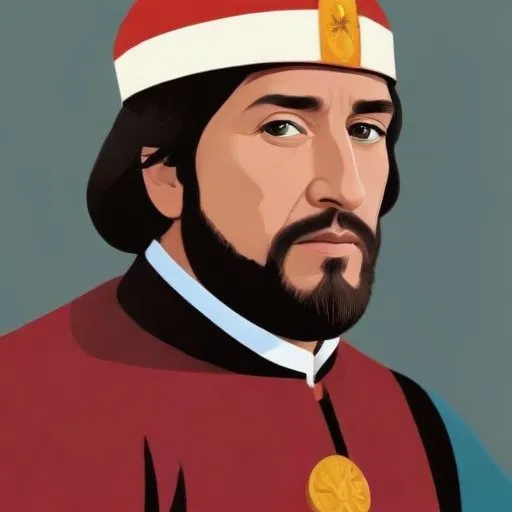
Unified the Crown of Aragon, ruling over a vast territory in eastern Spain, and sponsored the voyages of Christopher Columbus, leading to the discovery of the New World.
Ferdinand I of Aragon, also known as Ferdinand of Antequera, was a king who unified the crowns of Aragon, Valencia, and Sicily, playing a crucial role in shaping theCourse of Spanish history. He is remembered for his prudent administration, military conquests, and his key role in ending the Western Schism that had divided the Roman Catholic Church for nearly 40 years.
Ferdinand was born on November 27, 1380, in Medina del Campo, as the younger son of King John I of Castile and Eleanor of Aragon. His early life was marked by his close connection to the royal courts of Castile and Aragon, which would eventually lead to his ascension to the throne.
In 1403, Ferdinand founded the Order of the Jar, a new order of knighthood, demonstrating his commitment to chivalry and nobility. Following the death of his elder brother, King Henry III of Castile, Ferdinand declined the Castilian crown and instead became coregent with Henry's widow, Catherine of Lancaster, during the minority of his nephew John II of Castile. This period saw Ferdinand distinguish himself through his prudent administration of domestic affairs.
In 1410, Ferdinand conquered the town of Antequera, earning him his surname. Following the death of his maternal uncle, King Martin I of Aragon, Ferdinand was chosen as King of Aragon in 1412, in the Compromise of Caspe, succeeding him to the throne.
Ferdinand's brief reign was marked by several significant achievements. He dissolved the County of Urgell in 1413 and created the title of Prince of Girona for the heir of the Crown of Aragon in 1416. His most notable accomplishment was his agreement to depose the Antipope Benedict XIII, thereby helping to end the Western Schism that had divided the Roman Catholic Church for nearly 40 years.
Ferdinand I of Aragon passed away on April 2, 1416, in Igualada. He was buried in the Crown of Aragon's royal pantheon of the monastery of Poblet, in a magnificent tomb ordered by his son Alfonso to Pere Oller in 1417. The Italian humanist Lorenzo Valla wrote an eloquent epitaph to commemorate Ferdinand's life and achievements.
Ferdinand I of Aragon's legacy extends beyond his military conquests and administrative achievements. His role in ending the Western Schism paved the way for a unified Catholic Church, while his prudent administration set a precedent for effective governance in the Iberian Peninsula. His impact on the development of the Spanish monarchy and its institutions continues to be felt to this day.
Ferdinand's commitment to chivalry and nobility was reflected in his founding of the Order of the Jar. His actions demonstrated a strong sense of justice and a desire to unite the warring factions of the Iberian Peninsula. While his personal beliefs are not well-documented, his actions suggest a deep commitment to the principles of Christianity and the ideals of chivalry.

Born in 1208
Conqueror of Valencia and Mallorca, he united the Crown of Aragon and expanded its territories through military campaigns. He also promoted the Catalan language and culture.
Born in 1320
King of Portugal who ruled from 1357 to 1367 and is remembered for his brutal suppression of the nobility and his role in the Portuguese succession crisis. He's also known for his tumultuous personal life, including the murder of his mistress's lover.